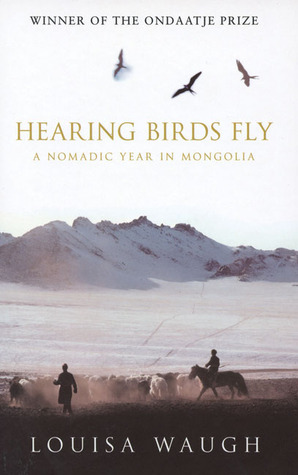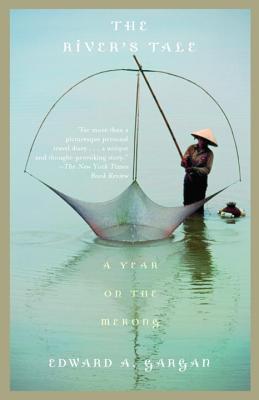First published in 2020.
I begin this particular Book Trail with a wonderful biography on Edward Thomas which I read last year. As ever, I have gone through the ‘Readers Also Enjoyed’ tool on Goodreads in order to generate this list. It soon becomes wonderfully Russian.

1. Now All Roads Lead to France: The Last Years of Edward Thomas by Matthew Hollis
‘Edward Thomas was perhaps the most beguiling and influential of First World War poets. Now All Roads Lead to France is an account of his final five years, centred on his extraordinary friendship with Robert Frost and Thomas’s fatal decision to fight in the war. The book also evokes an astonishingly creative moment in English literature, when London was a battleground for new, ambitious kinds of writing. A generation that included W. B. Yeats, Ezra Pound, Robert Frost and Rupert Brooke were ‘making it new’ – vehemently and pugnaciously. These larger-than-life characters surround a central figure, tormented by his work and his marriage. But as his friendship with Frost blossomed, Thomas wrote poem after poem, and his emotional affliction began to lift. In 1914 the two friends formed the ideas that would produce some of the most remarkable verse of the twentieth century. But the War put an ocean between them: Frost returned to the safety of New England while Thomas stayed to fight for the Old. It is these roads taken – and those not taken – that are at the heart of this remarkable book, which culminates in Thomas’s tragic death on Easter Monday 1917.

2. Selected Letters by John Keats
‘The letters of John Keats are, T. S. Eliot remarked, “what letters ought to be; the fine things come in unexpectedly, neither introduced nor shown out, but between trifle and trifle.” This new edition, which features four rediscovered letters, three of which are being published here for the first time, affords readers the pleasure of the poet’s “trifles” as well as the surprise of his most famous ideas emerging unpredictably. Unlike other editions, this selection includes letters to Keats and among his friends, lending greater perspective to an epistolary portrait of the poet. It also offers a revealing look at his “posthumous existence,” the period of Keats’s illness in Italy, painstakingly recorded in a series of moving letters by Keats’s deathbed companion, Joseph Severn. Other letters by Dr. James Clark, Percy Bysshe Shelley, and Richard Woodhouse–omitted from other selections of Keats’s letters–offer valuable additional testimony concerning Keats the man. Edited for greater readability, with annotations reduced and punctuation and spelling judiciously modernized, this selection recreates the spontaneity with which these letters were originally written.’

3. The Diaries of Sofia Tolstoyby Sofia Tolstaya
‘After marrying Count Leo Tolstoy, the renowned author of Anna Karenina and War and Peace, Sofia Tolstoy kept a detailed diary until his death in 1910. Her life was not an easy one: she idealized her husband but was tormented by him. She lived against the background of one of the most turbulent periods in her country’s history, as old feudal Russia was transformed by three revolutions and three major international wars. Yet it is as Sofia Tolstoy’s own life story—the study of one woman’s private experience—that these diaries are most valuable and moving. They reveal a woman of tremendous vital energy and poetic sensibility who, in the face of provocation and suffering, continued to strive for the higher things in life and to remain indomitable.’

4. The House by the Dvina: A Russian Childhoodby Eugenie Fraser
‘The riveting story of two families separated in culture and geography but bound together by a Russian-Scottish marriage includes the purchase by the author’s great-grandfather of a peasant girl with whom he had fallen in love, the desperate sledge journey in the depths of winter made by her grandmother to intercede with Tsar Aleksandr II for her husband, the extraordinary courtship of her parents, and her Scottish granny being caught up in the abortive revolution of 1905. Brought up in Russia but taken on visits to Scotland, Eugenie Fraser marvelously evokes a child’s reactions to two totally different environments, sets of customs, and family backgrounds. With the events of 1914 to 1920—the war with Germany, the Revolution, the murder of the Tsar, and the withdrawal of the Allied Intervention in the north—came the disintegration of Russia and of family life. The stark realities of hunger, deprivation, and fear are sharply contrasted with the adventures of childhood. The reader shares the family’s suspense and concern about the fates of its members and relives with Eugenie her final escape to Scotland.’

5. Michael and Natasha: The Life and Love of Michael II, the Last of the Romanov Tsars by Rosemary and Donald Crawford
‘Michael and Natasha is both an astonishing love story and an illuminating look at the last glorious days of the Romanovs and the brutal revolution that ended their reign. Based on private diaries, letters, and documents long hidden in the Soviet archives, it sheds light on an extraordinary tale of enduring love and ultimate tragedy that, until now, has never been told. He was the Grand Duke Michael Aleksandrovich, the tall, dashing brother of Tsar Nicholas II. She was Nathalie Wulfert, a beautiful, elegant, intelligent, divorced commoner, and the wife of a Guards officer under Michael’s command. Everything was wrong…yet for Grand Duke Michael, it was love at first sight-an obsession that would lead to disgrace, humiliation, and exile. Much of Michael and Natasha’s story is told in their own words, through hundreds of hitherto unpublished letters. Here they reveal their passion, their joy, and their despair as they are banished from their own country, bathed in scandal in the courts of Europe, and forced to suffer cruel separation. But more than a love story, Michael and Natasha is a historical drama played out against the elegant background of a bygone age and a world at war. It is a spell-binding account of Michael’s return to Russia, his reputation as a war hero, the downfall of Nicholas II, the strange and short reign of Grand Duke Michael, and the cruel and tragic end of one of the most colorful eras in world history.’

6. Elizabeth, Grand Duchess of Russia by Hugo Mager
‘Had Elizabeth married the future Kaiser of Germany, as her grandmother so shrewdly desired, World War I might well have been deterred, and had she not arranged the marriage of her younger sister, Alexandra, to the man who became Tsar Nicholas II, the Russian Revolution might have been averted. Modern European history was shaped by the choices Elizabeth made. Thoroughly researched and elegantly composed, Hugo Mager’s biography of Elizabeth captures the soul of the Grand Duchess of Russia and the spirit of her times as it follows her journey into the tide of monumental events, from the Franco-Prussian War to the Russian Revolution, that forged the modern world.’

7. St Petersburg: A Cultural History by Solomon Volkov
‘The city of St. Petersburg became the center of liberal opposition to the dominating power of the state, whether czarist or communist. Acclaimed Russian historian and emigre Volkov writes the definitive “cultural biography” of that famed city, sharply detailing the well-known figures of the arts whose works are now part of the permanent fabric of Western high culture.’

8. Land of the Firebird: The Beauty of Old Russia by Suzanne Massie
”Land of the Firebird’ is a WONDERFUL and ENGAGING in-depth look of Russian history from 987-1917, spanning the ascension of Vlad and the Orthodox Church to right before the Revolution. With colorful prose Suzanne Massie details the variety of Russian existence–tsars and serfs and merchant-princes and babushkas–no stone is left uncovered as she cross-references nearly a thousands years, writing with equal consideration of art, poetry, country-life, court-life, politics and its myriad games, myths and legends, influence “outside the sphere.”‘
Have you read any of these books? Do any pique your interest?






















































